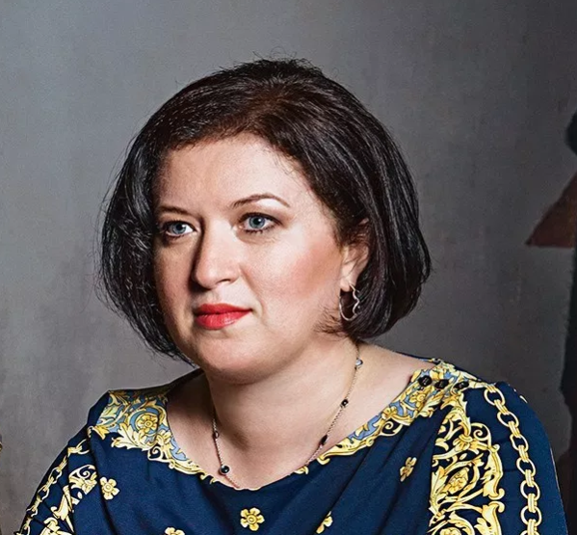There’s a lot going on behind the scenes of the lush, lifelike landscapes that form the backdrop of modern video games.
Unraveling that complexity is what drives Natalya Tatarchuk, Vice President of Graphics at Unity Technologies (a $22 billion public company). She and her team are building the technology that enables video game creators to bring their visions to life.
“You write your algorithm, and you might be really proud of the technical achievements you accomplish, but the real joy for me always comes from seeing artists and creators use it, often in ways that I didn’t anticipate,” said Tatarchuk, who earned an S.M. in computer science from the Harvard John A. Paulson School of Engineering and Applied Sciences and Graduate School of Arts and Sciences in 2008. “That joy, of seeing them do something utterly unexpected or surprising, that never gets old.”
For Tatarchuk, the joy she’s found in video games and computers goes back as far as she can remember. As the daughter of two engineers, technology was a common topic of discussion around the dinner table.
Her father designed video games in the 1980s (some of which are now in a museum in Moscow). A hardware engineer by trade, he’d spend time tinkering with computer boards with his daughter by his side.
Tatarchuk initially planned to study physics at Boston University, but quickly became hooked on computer programming and never looked back, majoring in computer science and math. She interned in a microchip manufacturing facility and several research labs before landing a job at the Massachusetts-based data visualization toolkit company AVS.
After a stint at a startup that was focused on building a 3D voxel-based modeler using haptic technology, Tatarchuk joined ATI Technologies, where she led a number of teams focused on everything from R&D in real-time rendering to GPU architecture.
She became enthralled by the knotty challenges of enabling fast, efficient real-time rendering, and decided to pursue a master’s degree at Harvard to develop more advanced math and systems-level skills.
“Computer graphics over the years have grown tremendously in terms of depth and complexity, and I felt I could use more rigor in understanding the complexities of that domain,” she said. “While wishing to strengthen my research skills, I also wanted to dive deep into practical elements.”
She immersed herself in computer graphics and vision courses, where the problems were vast and convoluted, but also inspiring because they were so pragmatic. She especially enjoyed a neuroscience/computer vision symposium that helped her better understand how the human brain processes visual inputs, and how we can translate those to computer vision algorithms.
Tatarchuk took her broadened skills to Bungie, where she worked on developing a new game engine for the popular Destiny game series.
“Some of the most sophisticated computation happens in game engines. It is an application where you don’t know the workload ahead of time. It is highly dependent on the choices of artists, as well as game designers, and the dynamic actions of a vast player population,” she said. “So you work with a lot of non-technical people, yet you have to fulfill a complex performance requirement that is driven by choices of the platform, like an iPhone versus an Xbox One.”
A game engine needs to be able to react seamlessly to the choices of players, and handle enormous amounts of complex geometry with incredible detail, while also being able to achieve high performance.
It’s easy to get bogged down in the technical details, she said, but the most important achievement isn’t a particular algorithm, but enabling the game creators to be successful.
Now at Unity, Tatarchuk is solving those problems on an even larger scale. The company’s graphics engine is used by more than two million developers, from game designers to NASA engineers to automobile manufacturers. Those users have vastly different content creation needs, and put the Unity graphics engine to work on 44 different platforms.
“Ultimately, we want to make it easy for people to create,” she said. “Some of these creators are teachers or doctors. For instance, people are creating mobile apps in Chicago for doctors around the world, some of whom may be training new physicians in Africa. None of them are technical— they may not know how to do VR setup or how to tune graphics settings to keep the best performance. So our goal is—how do we make it easy for people so they aren’t burdened by technology, but can accomplish their amazing vision?”
Staying on top of the ever-evolving technology is also a major component of Tatarchuk’s day-to-day work. She and her team can’t afford to be only focused on what’s new now—they have to think five or 10 years down the road so they can design their engine to work with the complexities of the PlayStation 5 and beyond, for instance, or the next wave of augmented reality glasses.
She’s constantly learning, which is one of things she loves the most about her job. And being able to work with some of the most creative people in the games and entertainment industry is a constant source of inspiration.
“Every day there is some fantastic new problem to solve,” she said.
Press Contact
Adam Zewe | 617-496-5878 | azewe@seas.harvard.edu
